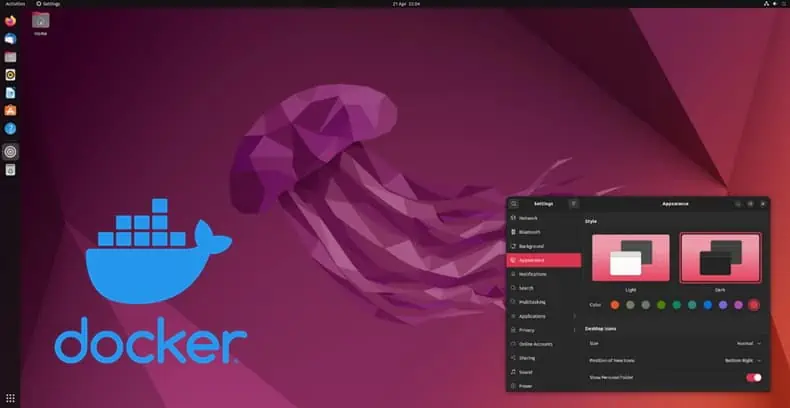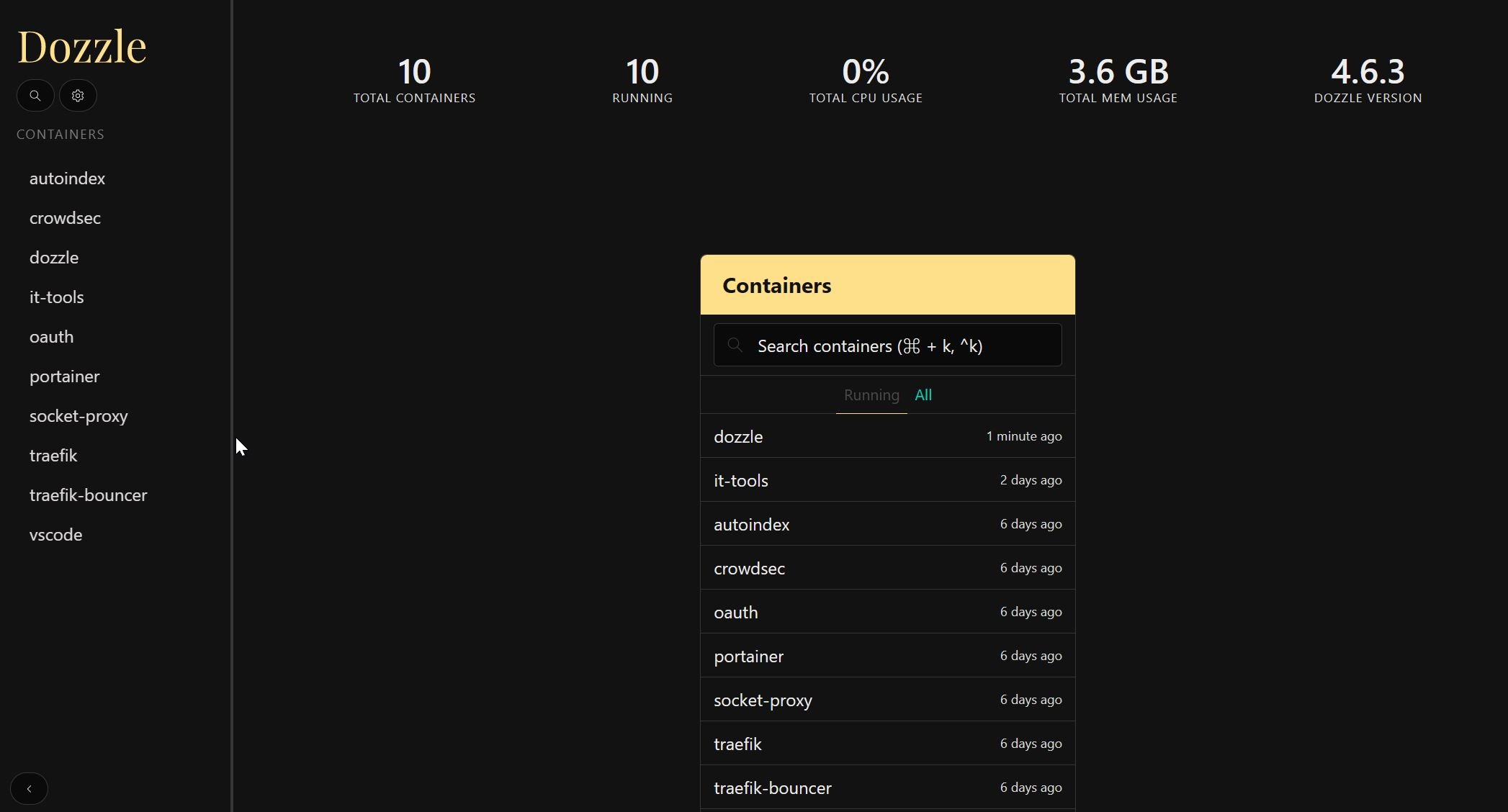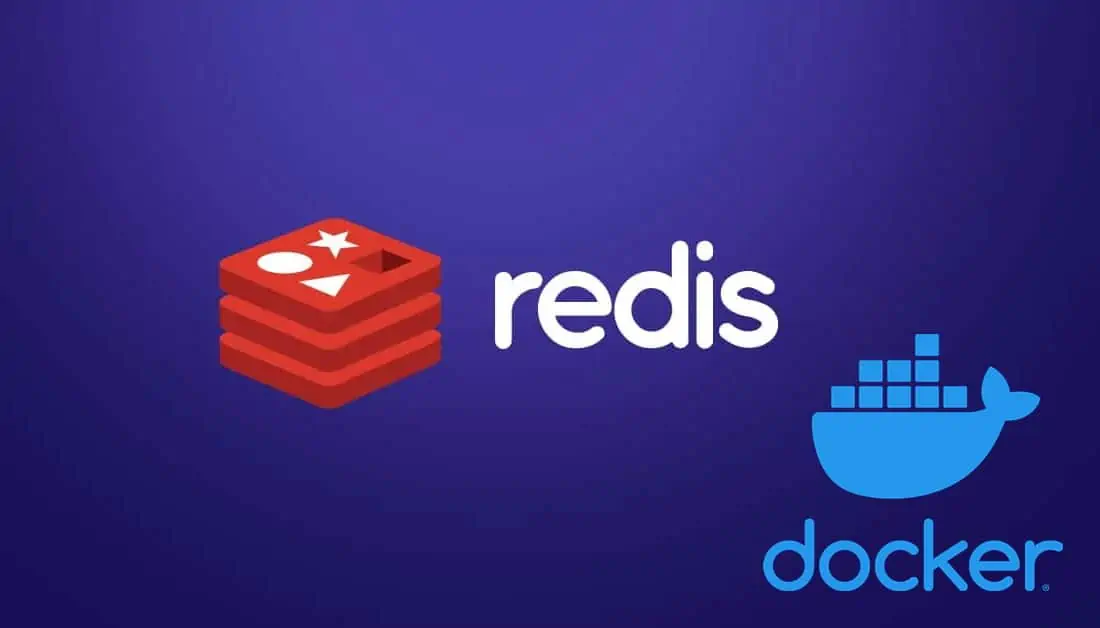We already shown how to install RuTorrent on Docker commandline, which works on all platforms: Windows, Linux, and Mac. For people who don't prefer commandline, we presented Kitematic Docker GUI for Windows. In this post, I will show you how simple it is to install RuTorrent on Docker using Kitematic GUI for Docker engine. Unfortunately, at this point, there is no Kitematic like tool for non-Windows environment. Therefore, you can only install RuTorrent using Kitematic on Windows systems.
Must Read: Docker Media Server Ubuntu: Compose for 23 Awesome Apps
Table of Contents
Install RuTorrent on Docker using Kitematic
If you still do not know about Docker, I strongly recommend our guides on what is Docker and its installation on Windows and Ubuntu. In short, Docker allows installing home server apps such as RuTorrent as self-contained containers, making it easy to install and manage them. No complicated RuTorrent setup procedures. So, without further ado let's see how to install RuTorrent using Kitematic Docker GUI.
If you have not setup Kitematic yet, follow our Kitematic Windows Guide to set it up first.
Surfshark VPN Exclusive Offer - 82% off ($2.39/month):
♦ Hide your browsing (no logs), Anonymize Streaming and Downloads
♦ Wireguard Protocol support for VPN.
♦ Circumvent Geo/Country Restrictions and access worldwide content
♦ Works on Windows, Mac, Linux, Android, iOS, Router, and more
♦ 1 TB Encrypted Storage
♦ Money back guarantee - Sign Up Now
1. Search for RuTorrent Docker Hub Container
Once Kitematic is open and connected to your Docker engine. Search for "Linuxserver RuTorrent" in the search box as shown in the picture below.
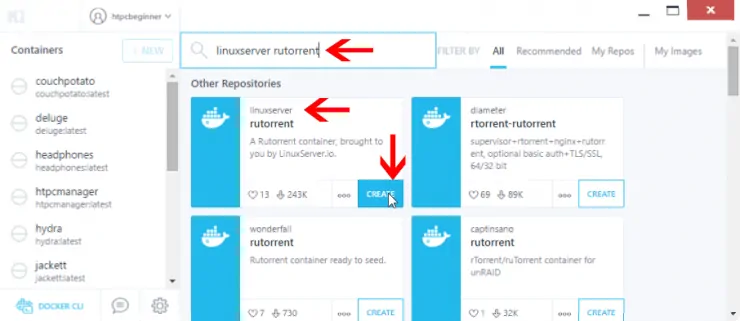
There are several RuTorrent container images available on Docker hub. We are going to install LinuxServer's container. If you want to see all available RuTorrent containers, search for just "RuTorrent". I typically get the containers with high like and download numbers. LinuxServer's containers are widely used (needo and timhaak are other good ones). You may certainly try other containers. Remember, one of the advantages of Docker is that it isolates containers from the base OS and therefore you cannot damage your OS. [Read: AtoMiC ToolKit – Automate your Media Center]
2. Create New RuTorrent Container
Once your figure out which RuTorrent container image you want to use (in this case LinuxServer's), hit the "Create" button as shown in the picture above to install RuTorrent on Docker. The RuTorrent container image will start to download as shown below.
3. Setup RuTorrent using Kitematic
Once RuTorrent Docker Hub container image is downloaded, Kitematic will use the image to create a new container with RuTorrent. Wait for the container setup to complete.
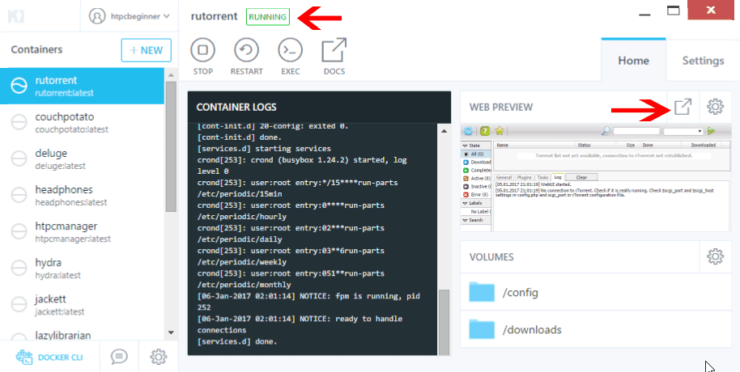
When done, you will see the "RUNNING" status and the RuTorrent web access link or URL and port, as shown in the picture above.
4. Setup Docker Volumes for RuTorrent
You want RuTorrent to be able to download to your torrents folder. By default, Docker containers will save any data in the containers folder in C Drive (User's folder) and RuTorrent won't have access to folders outside that. This may or may not be the right place or have enough space, depending on your situation. But you may have a specific download folder outside C Drive. Hit the "CHANGE" button and setup the path for "downloads" folder, as shown below.
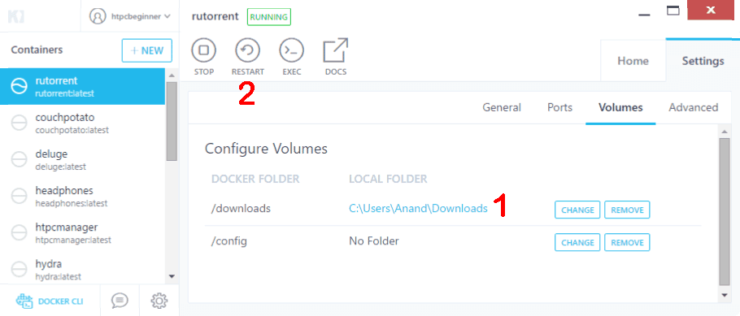
Do not setup a folder for "config" as this often leads to RuTorrent database corruption. Once done, hit "RESTART" for the new settings to take effect.

5. Change RuTorrent Port Number
Before accessing RuTorrent, I recommend changing MAC IP:PORT. Under Settings -> Ports for the RuTorrent container, you can change the access port to the default port number or anything of your liking. If I let Docker decide the port number, I noticed that sometimes the container does not start, possibly due to port conflicts. While manually changing, if you choose a port number that is already being used by another service, Kitematic will notify you. You will then have to choose a different port number. In this case, I set the MAC IP:PORT for RuTorrent web access to 8092 (different from DOCKER PORT 80, because there could be conflicts if you run a web server). This allows you to set port forwarding on your router and access RuTorrent from outside your home network. Make sure to restart your container after making the port change.
Access RuTorrent Container on Docker
You may then access RuTorrent on your web browser using the URL or Link displayed in the "Home" tab or under "Ports".
If RuTorrent opens up in your browser as shown above, you are all set. Notice how much more simple it is to setup RuTorrent using Kitematic than commandline? Now you can go ahead setup your Sonarr, SickRage, or CouchPotato to send the torrent file to RuTorrent. Once downloaded you have those apps process and organize the downloads for you for an automated media center. Your can even remotely manage RuTorrent using transdrone from your mobile device. Sounds exciting? Go ahead install RuTorrent on Docker using Kitematic GUI and make your home server better.

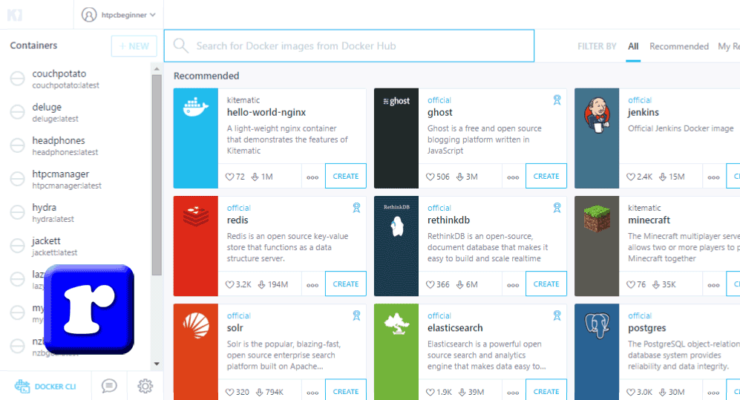
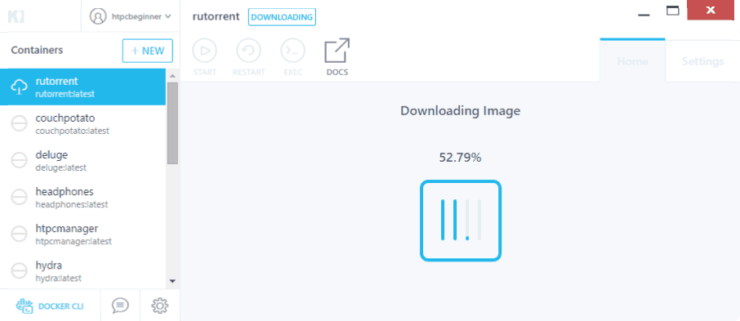
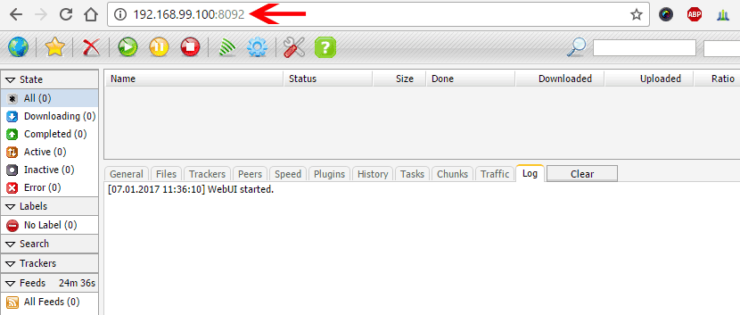

![[Video] Install Docker and Docker Compose on Ubuntu - Don't Do It WRONG Video Thumbnail: Install Docker on Ubuntu (with Compose) – Don't Do It WRONG](https://www.smarthomebeginner.com/images/2023/03/install-docker-on-ubuntu-with-co-1.jpg)

